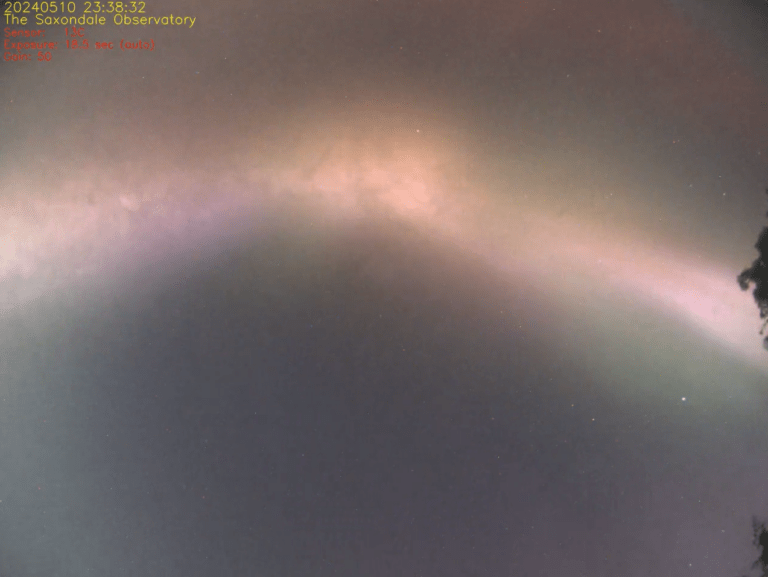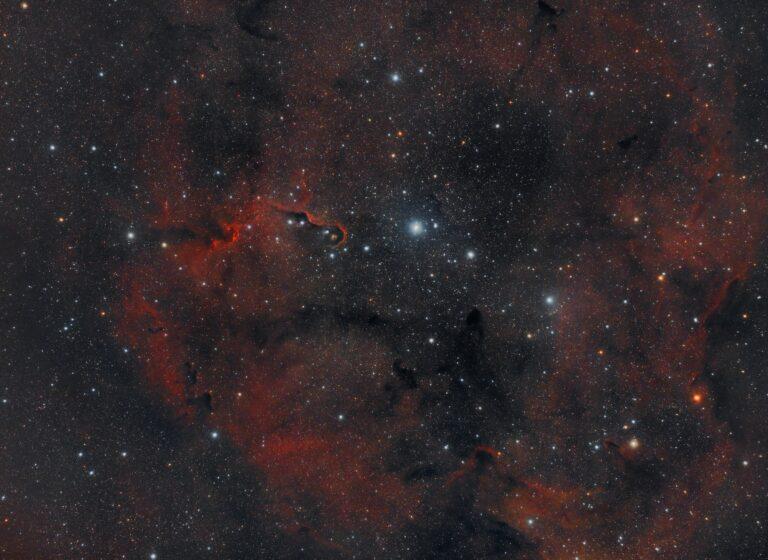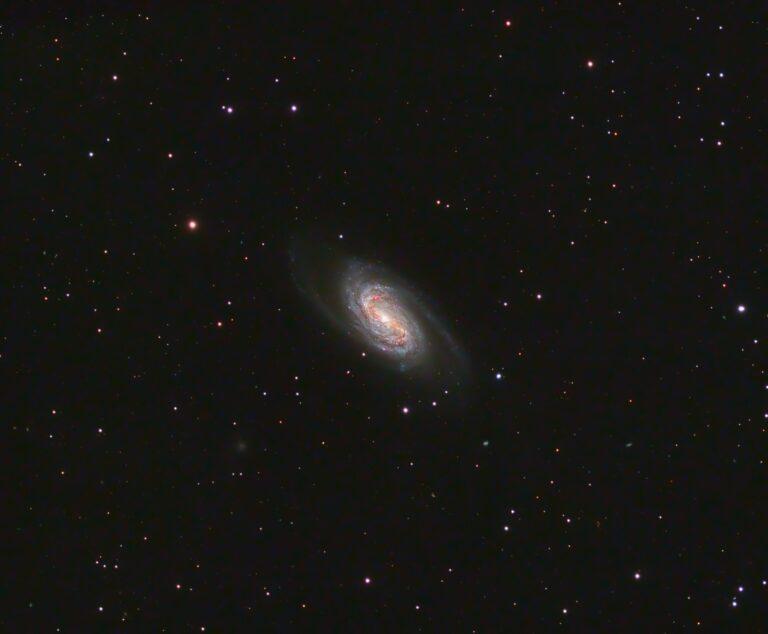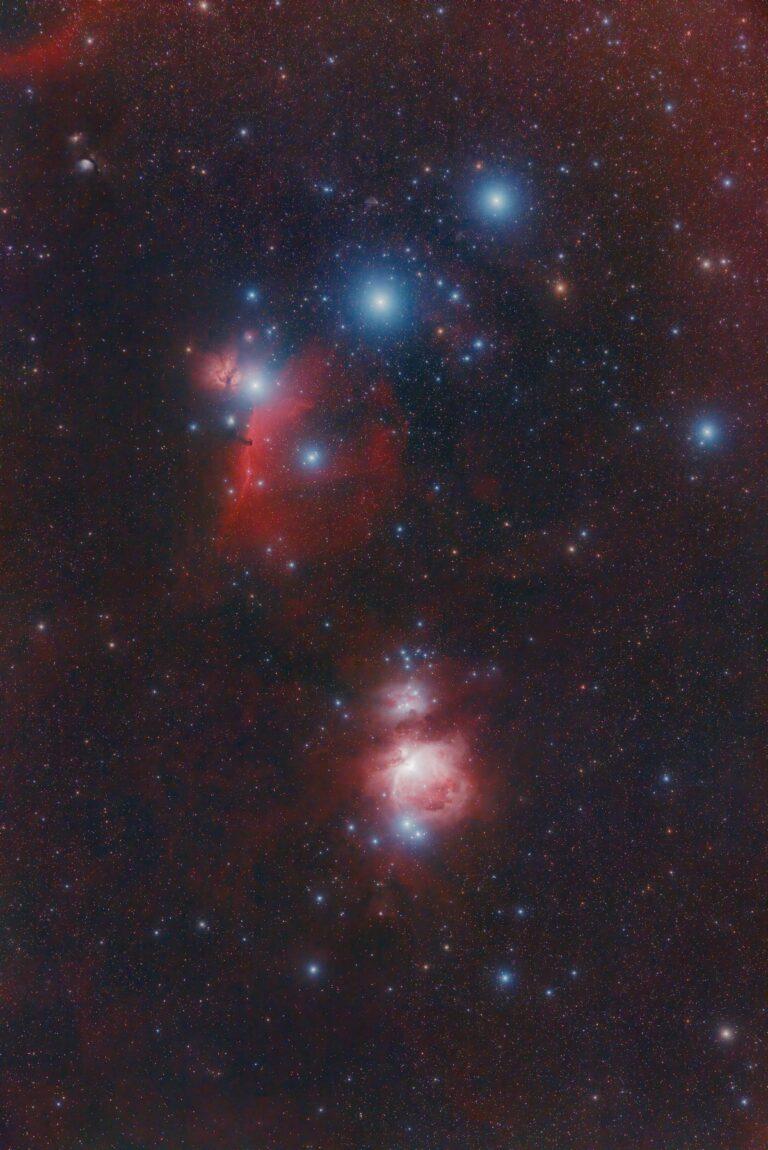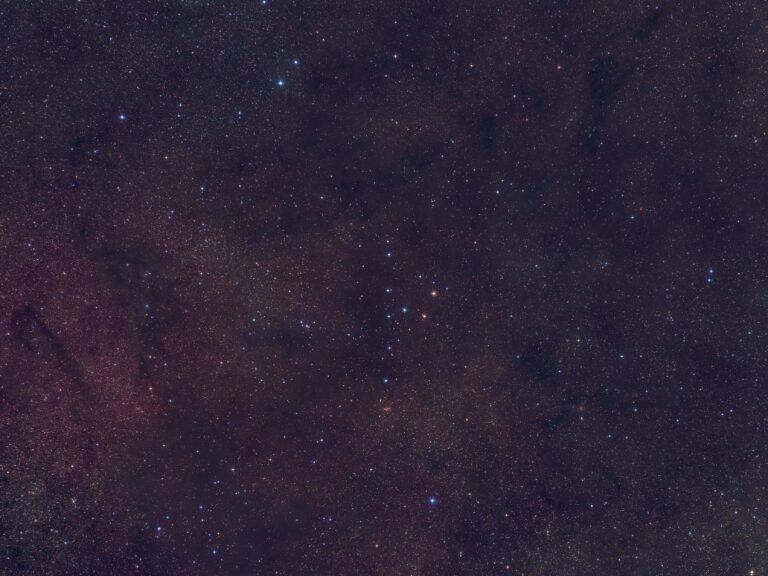https://skastro.net/wp-content/uploads/2024/05/allsky-20240510.mp4 A fabulous aurora display occurred over the UK on the late evening of Friday 10th May and into the morning of 11th May. We do get Aurora in the UK but this one was the best for many years. This is because the UK is so cloudy and normally when there is a good show due to solar maximum or a coronal ejection you may be sure that it coincides with very cloudy and wet weather in the UK. Miraculously on this occasion we were treated to a fabulous display at the end of a very clear week.
IC1396 is a fabulous and well known nebula complex in the Far Northern constellation of Cepheus and is about 2400 light years distant. It is comprised of a huge cloud of excited hydrogen gas known as a HII region (pronounced H-two). Some nice features include the Elephant’s Trunk nebula embedded in it.Full resolution (8Meg) image here (opens in a new tab): https://skastro.net/wp-content/uploads/2024/01/IC_1396_WF.jpg IC1396 Nebula in Cepheus Technical Details Imaged from my back yard in Nottingham, UK on the nights of 15 and 16th October 2023 when almost directly overhead. It consist of 54 x 240s exposures with a QHYCCD One Shot Colour (OSC) camera with a gain of 30 and offset of 0 through a Takahashi FSQ85 telescope with the 0.67 focal reducer/flattener.Sky conditions and transparency were both poor, as usual for the UK in all but the rarest nights of seeing.I hope you like it 🙂 IC1396 Annotated Finder Chart…
A magnificent spiral galaxy with TEC 140 and Atik 460 Many astronomers consider NGC 2903 the best and brightest galaxy that isn’t included in the famous Messier list and are surprised Messier himself didn’t include it in his catalogue. It is very photogenic and brighter than several other galaxies that are included in Messier’s list such as M65 and M66. It is located in Leo to the right of the “sickle” of Leo and is about 30 million light years distant. Full resolution image here (opens in a new tab). If you open the full resolution image you will see many tiny, remote galaxies in the depths of the Universe. Technical Detail Imaged with my TEC140 telescope and Atik 460 CCD camera with Astrodon E series LRGB filters on the 25th and 26th March 2022. The data set is as follows with the luminance binned 1×1 and the RGB at…
An image of Orion from January 2023 taken with a QHY268C cooled astronomy camera mated with a Samyang 135mm lens to give a very wide field view. Orion In A Wide Field with QHY268C and a Samyang 135mm DLSR lens Full sized image here (opens in a new tab).The image is composed of 56 x 120s exposures at F2.8. I used my wide field rig with autofocus to get the stars and nebulosity sharp and tight. I captured flats, darks and dark-flats. Mounted on NEQ6 with a guider scope and image data captured with NINA. All pre and post development is done in PixInsight.Captured over two nights 20th and 23rd January 2023 when Orion was high to the south. From my back yard in Saxondale, Nottinghamshire – suburban, Bortle 4-5.I have also captured the Constellation of Orion here. Annotated Version Finder Chart
Collinder 399 or Brocchi’s Cluster is offered nicknamed “The Coathanger” for its striking resemblance to that wardrobe item! If you look at the stars in the middle of the image and it looks very much like a coathanger on its side. It is located within the constellation of Vulpecula – The Fox – within a larger asterism called The Summer Triangle. The Coathanger is a chance, line-of-sight effect and the stars that form the appearance of the coathanger are not physically associated with each other at all and range from 350 to 2300 light years in distance. The stars are backdropped against the vast clouds of glowing hydrogen that dominate the spiral arms of the Milky Way galaxy. The Coathanger in Vulpecula Image Technical Data Uncompressed version of the image is here (opens in new tab).Image captured in my backyard in Nottingham, UK on Sunday 20th September 2020. I used…

